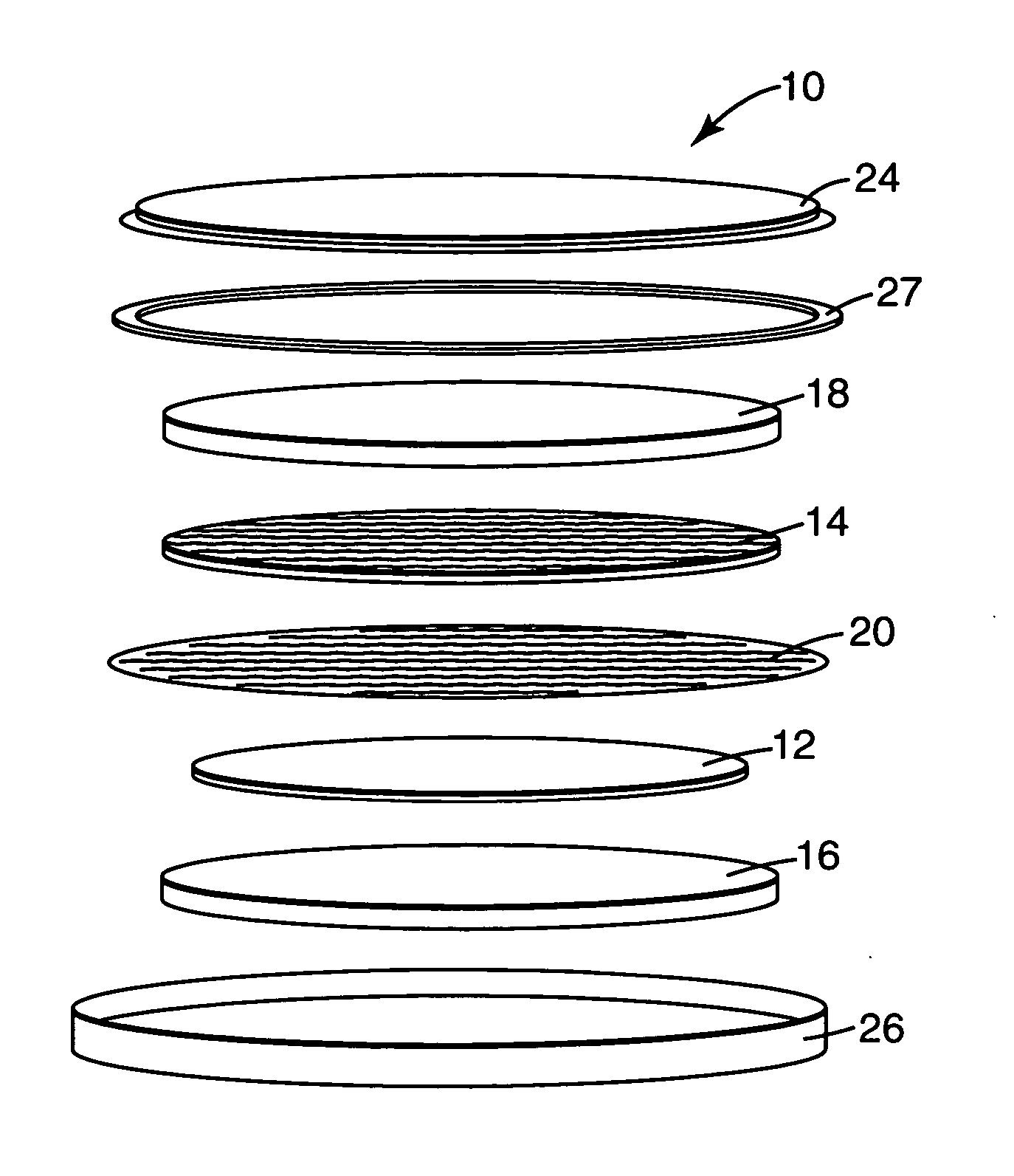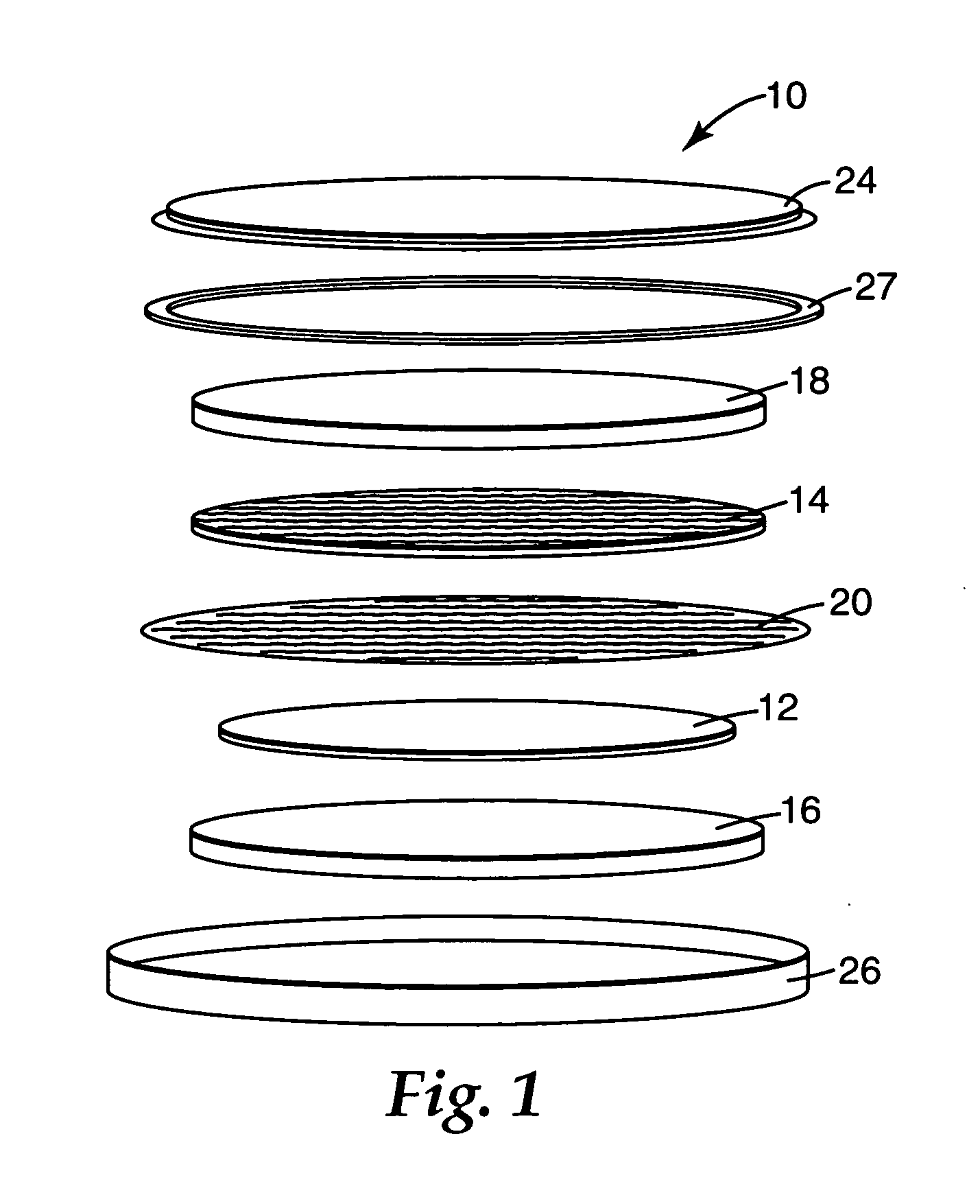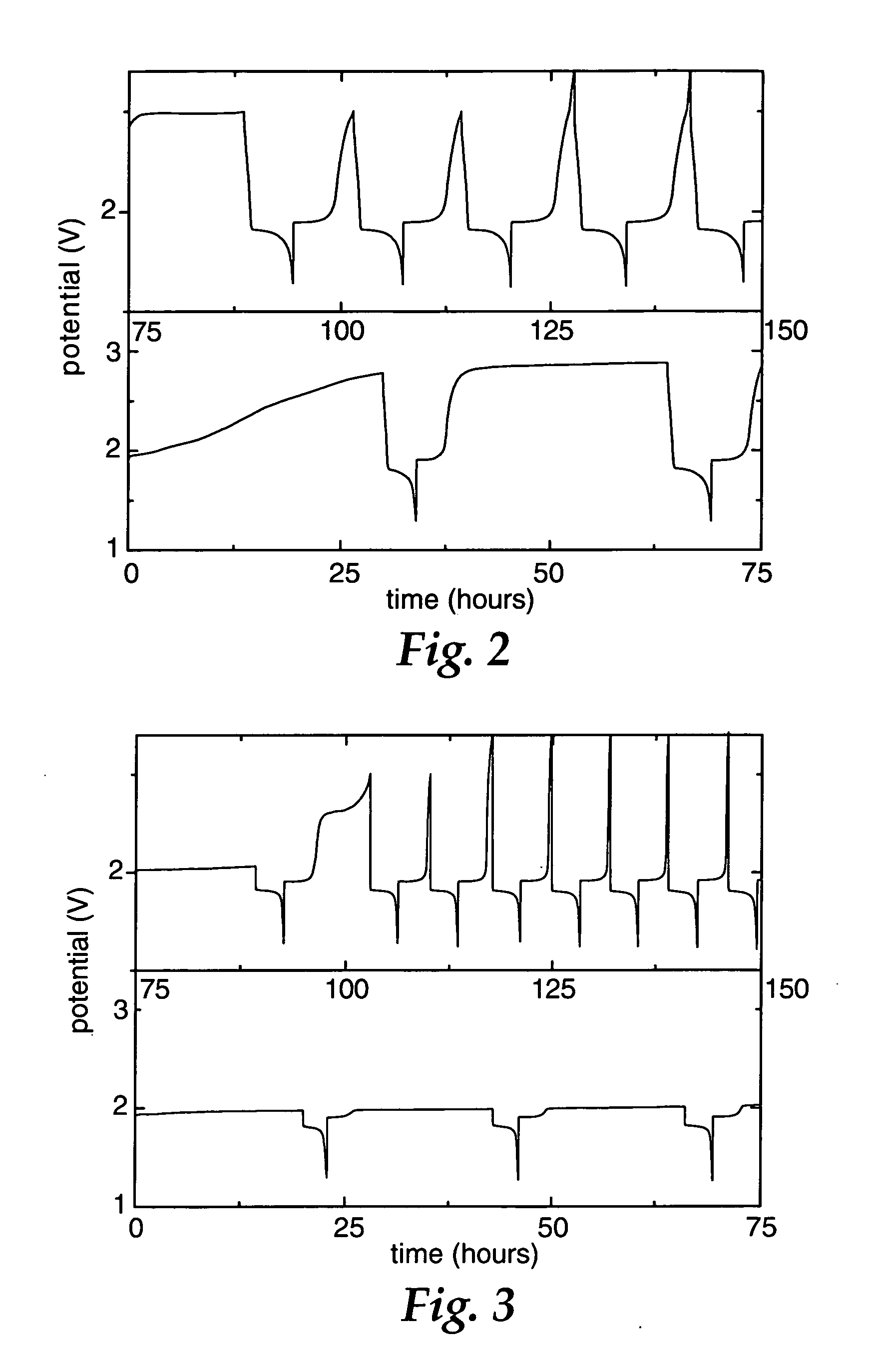N-oxide redox shuttles for rechargeable lithium-ion cell
a rechargeable lithium-ion cell and redox shuttle technology, applied in secondary cells, non-aqueous electrolyte cells, cell components, etc., can solve problems such as circuitry adding cost and complexity, unable to meet the requirements of large cells having sufficient tolerance for electrical and mechanical abuse for consumer applications, and unable to meet the requirements of large cells
- Summary
- Abstract
- Description
- Claims
- Application Information
AI Technical Summary
Benefits of technology
Problems solved by technology
Method used
Image
Examples
examples 1-14
[0050] Negative electrodes were made from Li4 / 3Ti5 / 3O4 (synthesized according to the procedure shown in K. M. Colbow, R. R. Haering and J. R. Dahn, “Structure and Electrochemistry of the Spinel Oxides LiTi2O4 and Li4 / 3Ti5 / 3O4”, J. Power Sources, 26, 397-402 (1989)) or from mesocarbon microbeads (“MCMB”, a graphitic carbon with 3.45>d002>3.354 Å, obtained from E-One / Moli Energy Canada, Maple Ridge, B.C., Canada), using the following procedure. 100 Parts of the negative electrode active material (viz., Li4 / 3Ti5 / 3O4 or MCMB), 5 parts KYNAR™ 301P polyvinylidene fluoride (commercially available from Atofina Chemicals, Philadelphia, Pa.) and 5 parts SUPER S™ Carbon Black (commercially available from MMM Carbon, Tertre, Belgium) were mixed with N-methylpyrrolidinone to form a slurry. After thorough mixing in a polyethylene bottle containing spheres of ZIRCOA™ 6.35 mm diameter zirconium oxide banded satellite spherical media (commercially available from Zircoa, Inc., Solon, Ohio), the slurr...
PUM
| Property | Measurement | Unit |
|---|---|---|
| temperature | aaaaa | aaaaa |
| diameter | aaaaa | aaaaa |
| diameter | aaaaa | aaaaa |
Abstract
Description
Claims
Application Information
 Login to View More
Login to View More - R&D
- Intellectual Property
- Life Sciences
- Materials
- Tech Scout
- Unparalleled Data Quality
- Higher Quality Content
- 60% Fewer Hallucinations
Browse by: Latest US Patents, China's latest patents, Technical Efficacy Thesaurus, Application Domain, Technology Topic, Popular Technical Reports.
© 2025 PatSnap. All rights reserved.Legal|Privacy policy|Modern Slavery Act Transparency Statement|Sitemap|About US| Contact US: help@patsnap.com



